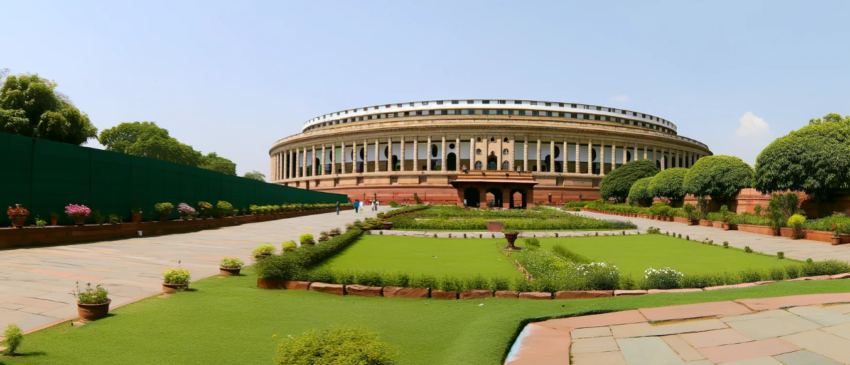| Listen to our audio presentation: Global Nuclear Proliferation |
Prime Minister Narendra Modi’s Bharatiya Janata Party (BJP)-led alliance is leading as India counts votes after a seven-phase election, starting April 19 and ending on June 4, 2024. To form a government, a party or coalition needs 272 seats in the 543-member Lok Sabha. Exit polls indicate Modi is likely to return to power for a third consecutive term, while the opposition led by the Indian National Congress hopes for an upset.
A record-breaking 642 million voters participated, although the turnout was 66.3 percent, slightly lower than in 2019. Most exit polls predict a significant victory for the BJP-led National Democratic Alliance (NDA), with forecasts of 350-370 seats for the NDA and 107-140 seats for the INDIA bloc.
Axis My India, Today’s Chanakya, and India TV-CNX exit polls suggest the NDA might win up to 400 seats. Specifically, Axis My India predicts 322-340 seats for the BJP and 39-61 for its allies, while the Congress might secure 60-76 seats, with its allies obtaining 71-90 seats.
The BJP’s massive mandate is attributed to Modi’s ability to transcend caste lines and focus on welfare schemes and infrastructure projects. However, there is some dissatisfaction among lower economic strata over issues like the Agnipath scheme and job scarcity. The BJP’s election machinery, supervised by Amit Shah, has been critical, though there are concerns about its increasing subservience to Modi.
The BJP has also managed alliances with JD(U) in Bihar, JD(S) in Karnataka, TDP and JanaSena Party in Andhra Pradesh, and factions of NCP and Shiv Sena in Maharashtra, although attempts with BJD and Akali Dal failed. The election results will reveal the success of these alliances and the impact of the BJP’s welfare guarantees compared to the Congress’s Nyay campaign.
References:
Aljazeera: “India election results 2024 live: BJP-led alliance ahead as Modi eyes win” by Nadim Asrar and Usaid Siddiqui, published on June 4, 2024
Mint: “Lok Sabha Election Results: An exit polls recap of BJP-NDA Vs INDIA in North, South, East, West — Who may win?” by Akriti Anand, published on June 4, 2024
The Indian Express: “If BJP wins big, how will size matter? Five things party will watch out for” by Liz Mathew, updated on June 4, 2024
Addendum: Understanding the Structure and Function of India’s Parliamentary System
India operates under a parliamentary system as defined by its constitution, with power distributed between the union government and the states. It boasts the largest democracy in the world, with a complex yet well-defined electoral and governance framework.
Ceremonial and Executive Roles: The President of India serves as the ceremonial head of state and the supreme commander-in-chief of the defense forces. However, the real executive power rests with the Prime Minister, who is the leader of the party or coalition with a majority in the Lok Sabha (the lower house of Parliament). The Prime Minister heads the Union Council of Ministers and is the chief advisor to the President, playing a pivotal role in the legislative branch of the government.
Regional Governance: India is divided into states and union territories. Each state has a Governor, appointed by the President, who serves as the state’s ceremonial head. However, executive authority in the states lies with the Chief Minister, who leads the majority party or coalition in the State Assembly elections. The Chief Minister operates within the state and collaborates with the Prime Minister and central ministers on matters of mutual concern. Some union territories also have legislative assemblies and territorial governments, while others are directly governed by administrators or lieutenant governors appointed by the President.
President’s Oversight and State Governance: The President of India can intervene in state governance through appointed governors, especially during crises when the state government fails to maintain peace and order. The President can dissolve a state government and call for new elections based on the Governor’s recommendations.
Election Commission of India (ECI): The ECI is an autonomous constitutional body responsible for overseeing and administering elections at the union and state levels, ensuring free and fair elections. The Commission’s mandate includes supervising elections for the President, Vice-President, Rajya Sabha (upper house), Lok Sabha, State Legislative Assemblies, and State Legislative Councils. It also handles election disputes and has residuary powers to address situations not covered by existing laws. The ECI was established as a permanent constitutional body, with Sukumar Sen serving as its first Chief Election Commissioner.
State Election Commissions (SECs): In addition to the ECI, each state has its own State Election Commission responsible for conducting elections to local governance bodies, such as Panchayats and municipalities. The State Election Commissioner is appointed by the Governor for a fixed five-year term and enjoys security of tenure similar to that of a High Court judge.
Elections in India: India conducts elections for various offices and legislative bodies:
- President and Vice President of India
- Members of Parliament in Rajya Sabha (Upper House) and Lok Sabha (Lower House)
- Members of State Legislative Councils and State Legislative Assemblies
- Members of local governance bodies (Municipalities and Panchayats)
By-elections are held as needed when seats become vacant due to death, resignation, or disqualification of members.
Lok Sabha Elections: Members of the Lok Sabha are directly elected by the adult citizens of India from various constituencies. Each citizen can vote only in their respective constituency. Members, once elected, serve for five years unless the house is dissolved earlier by the President on the advice of the council of ministers. The Lok Sabha meets in the Sansad Bhavan in New Delhi to deliberate on and create laws that govern the country. General elections for the Lok Sabha are held every five years to elect 543 members.

